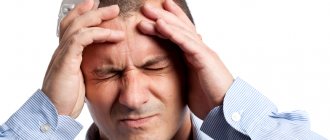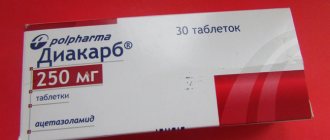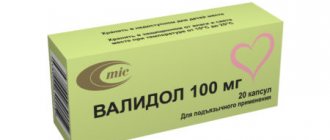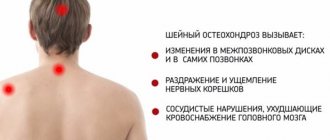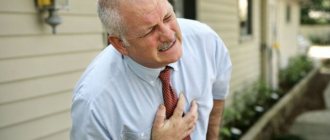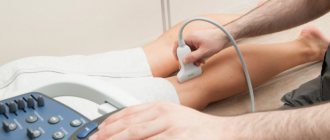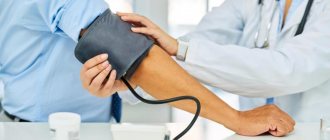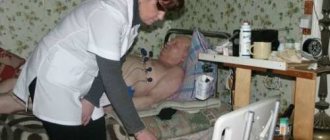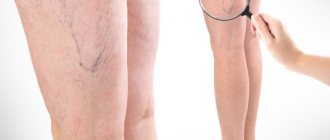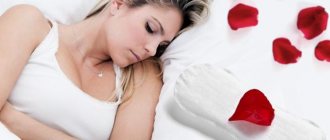What is the relationship between VSD and spinal osteochondrosis?
With osteochondrosis, the cartilage tissue between the vertebrae is destroyed and bone growths appear. The circulatory system and nerve bundles are pinched. Therefore, against the background of osteochondrosis of the cervical spine, VSD often occurs. In 90% of examples, osteochondrosis is one of the causes of these diseases .
VSD is characterized by various disorders of excitation and inhibition of the central nervous system. This causes problems with the functioning of internal organs. The disease appears not only as a result of the development of osteochondrosis. Some experts believe that VSD, if there are problems with the functioning of organs, can impair metabolism and provoke spinal deformation.
Vegetative-vascular dystonia and osteochondrosis can develop separately for various reasons. Therefore, for diagnosis it is necessary to collect enough anamnesis.
Therapy
People diagnosed with VSD need to be able to cope with attacks on their own. They arise suddenly and at that moment there may be no one nearby.
First aid, how to stop an attack
To stop an attack you need to do the following:
- Calm down. The symptoms that appear are just a crisis of VSD and very soon they will disappear, they do not lead to death, so there is no need to think about it.
- Unbutton tight clothing and go out into the fresh air.
- Drink a sedative - motherwort, valerian, motherwort tincture.
- If it is not possible to go outside, you need to open the window, lie on your back and raise your legs to improve the flow of blood to your head.
- If signs of loss of consciousness appear, you should sniff ammonia or wash with cool water.
- Then you should drink Corvalol or Valocordin.
- If your blood pressure rises, you need to take an antihypertensive drug; if your blood pressure drops, you need to try to increase it - drink coffee or strong black tea.
- To normalize the heartbeat, you need to apply gentle pressure on the eyeballs.
Drug treatment
Drug treatment should be prescribed by a specialist . The most commonly prescribed drugs are:
- vitamin B complexes;
- drugs that affect vascular patency - Actovegin, Cinnarizine, Cavinton;
- nootropics – Phenibut;
- sedatives – motherwort, valerian;
- vasodilators and chondroprotectors – Aflutol, Teraflex;
- non-steroidal anti-inflammatory drugs – Ketorol, Baralgin;
- tranquilizers or antidepressants - Sertraline, Rispolept, Flucosetine.
Massage
Massage can reduce headache attacks, normalize heart rate, and relieve the feeling of weakness.
The massage technique directly depends on the type of VSD - hypotonic or hypertonic.
Massage can be classic, acupressure or collar area.
The optimal method is selected by a specialist. As for self-massage, it must be performed carefully and should take no more than 5 minutes. First they massage the crown, then rub the temples, go to the points behind the ears, then go down to the back of the head and neck.
Physiotherapy
Prescribed: UHF, magnetic therapy, ultrasound, laser, electrophoresis, electrical stimulation, acupuncture. You must understand that the isolated use of physiotherapy will not give the desired effect; it is necessary to undergo complex treatment.
Exercise therapy
Physical therapy is indicated for osteochondrosis and other pathologies that can provoke the appearance of VSD. Daily gymnastics in the morning and evening, swimming, yoga, Nordic walking, etc. help improve the condition of cartilage tissue and also improve blood circulation in the brain. However, it is undesirable to overload the spinal tissues , so the first few sessions should be carried out together with a physical therapy doctor.
Psychotherapy
Since the clinical picture of VSD is directly related to the psychological state of the patient, psychotherapy is considered one of the mandatory methods in the treatment of this pathology.
Experts use several techniques. Psychoanalysis is a search in the past for the cause that caused the development of the disorder. Behavioral psychotherapy is a search for the cause in the present tense, the problem is eliminated by changing the patient’s attitude towards it.
Geshalt therapy - a specialist explains how to divide your life position into the main and background, and also teaches how not to get hung up on the background.
Cognitive behavioral analysis is the study of memory, emotions, thinking, which allows you to find the essence of behavioral problems.
Ericksonian hypnosis is a light trance that a person is not even aware of. Hypnotherapy is a more complete immersion of a person into hypnosis, which allows you to effectively work with problems.
Traction
Traction – relieving the patient of various spinal deformities.
In this case, a space is formed between the vertebrae, and, consequently, the stagnation of venous blood is eliminated, blood microcirculation improves, and the pressure on the spinal roots becomes less. After this procedure, the pain symptom goes away, however, there is an opinion that this method gives only a temporary effect .
Traditional methods
Since VSD has a favorable course, it can be treated with traditional medicine. Clay treatment is popular. You should buy clay at a pharmacy - it is pure and safe clay, which must be diluted in water and drunk within a week. Clay will cleanse the body of toxins, which will improve the overall condition.
If VSD is accompanied by headaches and low blood pressure, you can try taking baths with the addition of mustard. Dilute 5 tablespoons of mustard in warm water, and then pour it into a bath with a water temperature of 39 degrees. Take a bath for about 7 minutes, after which you need to dress warmly and go to bed.
If you feel unwell in the morning due to low blood pressure, you can drink strong tea with the addition of a teaspoon of cognac. But with a hypertensive type of flow, this method is not recommended.
For severe headaches, you can cut beets in half and apply them to your temples. Hold for 5-7 minutes. It is also useful to drink beet juice, diluting it with carrot or cucumber juice.
As for the use of herbs, they are simply irreplaceable in the treatment of VSD. Their mild effect is very well suited for the treatment of this pathology. The most effective herbs are:
- valerian;
- hawthorn;
- motherwort;
- caraway;
- calendula;
- dill;
- barberry;
- peppermint and many others.
If you take infusions or decoctions of these herbs regularly, after a couple of weeks you can notice an improvement in your condition. But we must understand that herbal treatment is a long process.
For women, we can recommend the following herbal collection:
- 4 parts licorice root;
- 4 parts rose hips;
- 3 parts valerian root;
- 3 parts St. John's wort;
- 2 parts mistletoe;
- 2 parts of Leuzea roots;
- 2 parts angelica root;
- 2 parts Rhodiola root.
The following collection is recommended for men:
- 3 parts each of viburnum fruit and angelica root;
- 2 parts each of licorice, rhodiola, dandelion, and leuzea roots;
- 2 parts each of nettle, rose hips, wormwood and knotweed.
All herbs should be crushed in a coffee grinder, two tablespoons of powder should be poured into half a liter of boiling water and left overnight in a thermos. You can start taking the product in the morning - a third of a glass three times a day.
Reference! Treatment of VSD with herbs depends on the type of VSD. For the hypertonic type, the emphasis should be on hawthorn; for the hypotonic type, the emphasis should be on barberry. If the form of pathology is mixed, herbs can be combined.
How to choose the right therapy method?
It is best to use all the methods proposed above for the treatment of SCH and VSD. An integrated approach is the key to successful therapy. It is better to entrust the choice of medications and techniques to a doctor; a competent specialist, based on test results and the clinical picture, will select the optimal treatment regimen.
What is VSD?
The disease is diagnosed in many people suffering from dizziness, migraines, and heart problems. The list of painful conditions is very wide, but not all symptoms can explain the diagnosis.
Many organs and systems of the body can be affected by VSD. There are also common features for all examples. Problems with blood vessels appear due to disorders of the peripheral nervous system. In this situation, changes in the blood vessels of the head and dystonia occur .
Depending on the characteristics of the body, VSD can manifest itself in different ways. Common symptoms of VSD: migraine, dizziness, sweating, mood changes, anxiety, heart pain, there are many other signs.
Reasons for appearance
One of the main reasons for the development of cervical osteochondrosis is the natural aging of the body, accompanied by a slowdown in recovery processes. Systemic diseases, for example, gout, deforming osteoarthritis, rheumatoid arthritis, can provoke the destruction of intervertebral discs. Osteochondrosis develops against the background of a sedentary lifestyle, excessive physical activity, endocrine and metabolic disorders, congenital or acquired skeletal abnormalities. And the prerequisites for the appearance of characteristic symptoms of VSD are the following factors:
- frequent stressful situations;
- changes in hormonal levels;
- drinking alcohol, coffee;
- deficiency of microelements, water- and fat-soluble vitamins in food;
- sudden change in weather;
- respiratory, gastrointestinal infections;
- injuries.
Excessive mental stress leads to VSD.
The likelihood of functional disorders increases in people with certain personality and character traits. As a rule, they tend to experience ordinary everyday conflicts acutely. Such people initially have increased anxiety and suspiciousness.
How does VSD manifest?
Blood pressure drops due to hypertension during VSD. Patients feel weak, their daily activity decreases, and neurosis and hysteria often occur. The hypertensive form of the disease is characterized by increased blood pressure . Patients complain of dizziness and emotional instability.
The disease often impairs heart function. Such types of diseases are classified as VSD of the cardiac variety. Patients often experience unpleasant symptoms at the location of the heart. With VSD of the combined type, a complex assembly occurs in the body’s functioning. Pressure changes are recorded, anxiety arises, coordination deteriorates, and panic appears.
Instrumental studies
The symptoms of osteochondrosis and VSD are similar.
To clarify the etiology, it is advisable to first identify the presence of spinal pathology. There can be many causes of vegetative-vascular dystonia, and not all of them can be visualized. To detect signs of osteochondrosis, the most informative are:
- X-ray of the spine. In the picture you can see:
- reducing the distance between the vertebrae (due to thinning of the fibrous rings of the intervertebral discs);
- osteophytes (uneven edges of the articular surfaces that have grown to the sides).
- Magnetic resonance imaging. Visualized:
- swelling of the capsules of the intervertebral joints (due to injury by osteophytes);
- protrusion (atony of the fibrous ring);
- dislocations and subluxations of the vertebrae;
- herniated intervertebral discs (movement of the nucleus pulposus to the area of tear of the fibrous ring);
- swelling and detachment of the posterior longitudinal ligament.
Detailed symptoms
The signs of VSD and osteochondrosis are similar; both pathologies worsen different subsystems of the body. It is necessary to separate symptoms that indicate problems in different parts of the body.
When people are diagnosed with osteochondrosis, problems with the cardiovascular system arise. The patient experiences the following symptoms: heart pain, hands become cold, problems with the pulse, difficulty in cerebral circulation, heart rate increases, numbness in the hands, dizziness and headache, palms sweat.
Problems with the respiratory system are expressed most clearly. Patients panic when problems are detected. Symptoms: rapid shortness of breath, difficulty taking a breath, neuralgia, chest pain, heaviness in the chest. Disorders that occur with cervical osteochondrosis put great pressure on the nervous system. The patient experiences pain and panic begins.
The nervous system can be damaged in the following ways:
- Bad dream.
- Neuroses.
- Increased fatigue.
- Problems with the optic nerves.
- Increases sensitivity to sounds and minimal noise.
- The pain is constant and causes exhaustion.
- It is difficult to move your head, severe pain appears in the morning.
- Distinct mood changes, emotional outbursts.
The stages of diseases determine the development of symptoms.
Prevention
Cervical osteochondrosis can be prevented by identifying and eliminating risk factors. You should also regularly perform preventative exercises and eat right. No special diet is required, but it is recommended to reduce the consumption of salt and foods that contain large quantities of it.
It is advisable to include seafood and fish, spinach, cottage cheese, cheeses, legumes, nuts, and fresh milk into the diet. As for the prevention of VSD, it is as follows :
- to refuse from bad habits;
- Healthy food;
- to live an active lifestyle;
- swim;
- periodically take massage courses;
- master relaxation techniques;
- respond adequately to stressful situations.
Diagnostics
When patients experience pain in the back, neck and other parts of the spine, they should first contact a therapist. The specialist examines the patient and determines the necessary tests to take. Next, a preliminary picture of the disease is determined, and a referral to a doctor specializing in a particular case is written out. Most often, this is a neurologist, palpation of the vertebrae and the problem area is performed, and a conclusion is made about the patient’s condition.
After this, several types of detailed examination are carried out:
- MRI is an effective examination method.
- CT also provides accurate data for osteochondrosis; there are some contraindications, and there is no information about the deformation of soft cartilaginous tissues.
- X-rays provide an insufficient picture of the disease. This diagnostic method is not effective enough, but it is accessible.
When the results of the study show VSD in osteochondrosis, you need to undergo several procedures. This in-depth examination of symptoms is performed to determine the appropriate therapeutic modality. Additionally, the following are performed: EEG, ultrasound of the peritoneum and sternum. It is necessary to identify diseases accompanying VSD in a timely manner in order to determine the appropriate course of treatment.
Treatment
There are several treatment options for cervical dystonia. Taking medications will help relax the neck muscles and relieve spasms. These include muscle relaxants and certain drugs for treating Parkinson's disease. Some of these drugs are administered by injection.
Your doctor may recommend physical therapy, which includes stretching and strengthening exercises. They will help reduce pain and improve mobility and cervical posture. Massage and various stress reduction techniques are also effective for pain and discomfort. Some people use neck braces.
Extremely severe cases of the disorder may require surgery. Selective denervation involves cutting the nerves leading to the affected muscles. As part of deep brain stimulation surgery, the functioning of the nerves is corrected through electrical impulses.
Why do panic attacks occur?
People often panic when the cervical arteries, through which blood flows to the brain, compress the nervous system with oxygen and beneficial microelements.
As the disease progresses, the following condition occurs:
- Problems with brain nutrition.
- The arteries are compressed.
- Growths appear on the bones.
- The cervical vertebrae are deformed.
- The cartilage tissue is depleted, the discs change position.
Panic attacks with this pathology occur not only as a result of external symptoms. Transformations occur within the body. The supply of bone tissue with calcium is disrupted. There is a change in amino acid profiles. An anxious feeling appears, it is difficult to control your own fear.
Symptoms of a combination of VSD and cervical osteochondrosis: back and neck pain, a feeling of discomfort in the limbs, numb fingers, neuralgia, neck crunches, deteriorating sensitivity of the limbs due to irritation of the nerves, a feeling of goosebumps.
Osteochondrosis of the sternum and neck is characterized by cardinal symptoms. The heart beats faster or slows down. Pain appears in the chest area. Some patients feel a throbbing sensation in their neck. There is a fear that the heart will stop.
There is a feeling of lack of air during osteochondrosis. Patients complain of difficulty breathing or shortness of breath. Shortness of breath often occurs. In advanced situations, breathing problems are observed even in a calm position. With panic attacks, the symptoms worsen.
With VSD and osteochondrosis, the following digestive system disorders are observed: bloating, nausea, heartburn, frequent trips to the toilet, diarrhea. If patients are very worried, they begin to feel sick and their stomach hurts . The state of health worsens due to compression of the root in the thoracic region.
Patients experience increased emotionality and become irritable over trifles. Changing weather conditions may cause drowsiness. Some patients have difficulty falling asleep. A painful burning sensation appears in the head with osteochondrosis. Symptoms are made worse by problems with blood flow in the veins. Trembling and fainting often occur.
Danger of crises
VSD is not a fatal pathology, but often leads to irreversible pathologies. It is quite difficult to give a specific answer as to why VSD is dangerous, for example, panic attacks can lead to :
- attacks of suffocation;
- increased heart rate;
- loss of consciousness.
Such phenomena are very difficult for a person to bear and significantly worsen the quality of his life.
The main risks of VSD:
- disruptions in the functioning of the endocrine system;
- stomach ulcer or gastritis;
- digestive disorders;
- hypertension;
- ischemia;
- neurotic and mental disorders;
- problems with the lower extremities;
- disturbances in heart rhythm and deterioration of vascular patency;
- stroke and heart attack.
Important! Complications of neurocirculatory disorders can be dangerous diseases, so it is impossible to postpone therapy for VSD and SCH.
